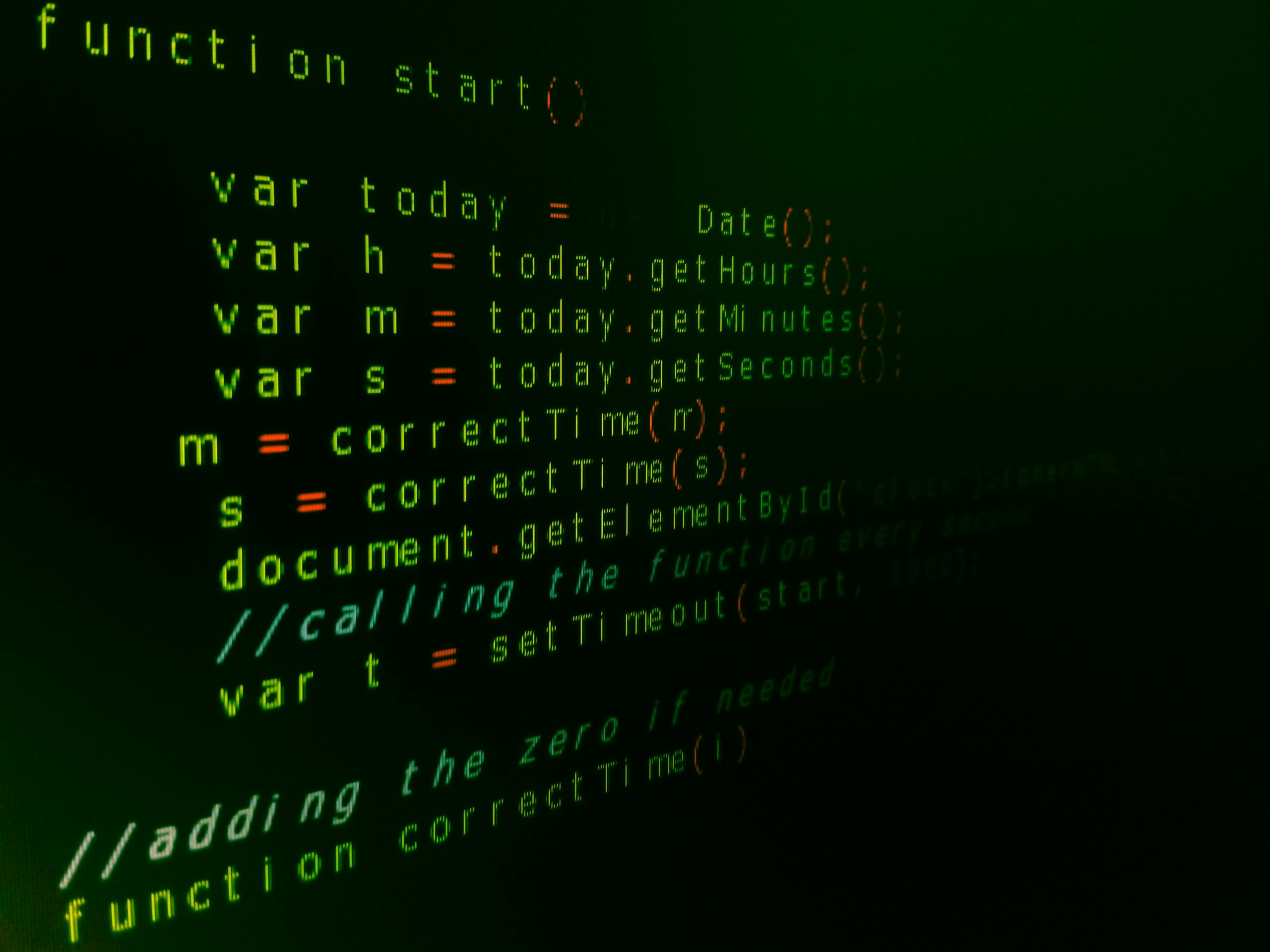
GitLab: Empowering Collaboration and Streamlining Development Workflows
Introduction to GitLab: A Comprehensive Guide for New Users
gitlab is a web-based platform used for version control and source code management. It enables collaboration among software development teams by providing a centralized repository for storing, tracking, and managing code changes. GitLab offers numerous features designed to streamline the development process and boost productivity.One of the main advantages of GitLab is its support for distributed version control systems like Git. This allows developers to work on their local copies of a project simultaneously and merge changes seamlessly. It facilitates better collaboration within development teams as everyone can work on their tasks independently, without worrying about conflicts or file locks.
GitLab provides a user-friendly interface that simplifies the process of creating repositories, branches, and merging changes. Additionally, it offers tools for issue tracking and project planning, enabling teams to manage tasks, milestones, and bug reports effectively. This ensures better organization and transparency throughout the development cycle.
Continuous Integration (CI) and Continuous Deployment (CD) play a crucial role in modern software development practices. GitLab supports these practices by integrating CI/CD pipelines directly into the platform. Developers can define custom workflows that automatically build, test, and deploy applications whenever changes are pushed to the repository. This automation minimizes manual errors and ensures faster feedback cycles.
Another key feature is GitLab's strong emphasis on security. It provides various security functionalities like access control, secure authentication mechanisms, and advanced permission settings. Teams can define who has access to specific repositories or projects down to granular levels, ensuring data integrity and protecting sensitive information.
GitLab also encompasses features for code review, enabling developers to collaborate effectively on pull requests. Team members can provide feedback, suggest improvements, and discuss changes directly within the platform, facilitating an efficient review process.
Furthermore, GitLab offers extensive integrations with third-party tools commonly used in software development workflows. These integrations range from popular project management platforms to logging systems, allowing teams to build comprehensive ecosystems customized to their needs.
In conclusion, GitLab is an advanced web-based tool that facilitates version control, collaboration, project management, and automation. It provides a wide range of features and integrations suitable for individual developers or large development teams looking to accelerate their workflows, improve code quality, and streamline the entire development process.

Harnessing the Power of GitLab for Project Management: Tips and Tricks
gitlab is a powerful tool that can greatly enhance project management processes. Here are some useful tips and tricks for harnessing GitLab's potential in project management.One key tip is to leverage GitLab's issue tracking feature effectively. This allows you to track tasks, bugs, and enhancements within your projects. Creating specific issues for each task makes it easier to manage and prioritize work. Assigning issues to team members fosters visibility and accountability. Additionally, use labels and milestones to further organize and categorize issues.
Make use of GitLab's project boards to create a visual representation of your workflow. Customizable boards allow you to set up stages such as "To Do," "In Progress," and "Completed." This helps track progress and ensures everyone is aware of the status of each task or issue.
Another handy feature is merge requests in GitLab. Offering feedback and merging code directly through the platform simplifies the review process. Utilize features like inline comments, approvals, and merge request templates to streamline collaboration and review cycles among team members.
Leverage GitLab environments to enable continuous integration and deployment processes. Create specific environments for development, staging, and production, enabling automated testing at each stage. By implementing a CI/CD pipeline, you can ensure that changes are properly tested before being deployed.
Integrate GitLab with other tools and services used in your project management ecosystem. For instance, integration with chat applications—such as Slack—allows real-time notifications for important GitLab events like new issues or merge request updates. Integrating with popular project management tools like Jira can also provide synchronization between platforms, easing cross-communication across teams.
Take advantage of GitLab's robust permissions system to define roles and access levels for all users involved in the project. Clearly defining permissions ensures that only designated individuals can perform critical actions, preventing important code or configurations from being altered by mistake.
Lastly, encourage clear documentation within GitLab. The built-in Wiki feature enables easy reference to project-related documentation, guidelines, and specifications. By utilizing this functionality, you ensure that essential project knowledge is centralized and accessible to the entire team.
By utilizing these tips and tricks in your project management workflows with GitLab, you can maximize its potential and effectively collaborate, track tasks, automate processes, and ensure the successful delivery of your projects.

Integrating GitLab with Your Development Workflow: A Step-by-Step Approach
gitlab is a robust and widely-used web-based Git repository management tool that provides a host of features to help streamline your development workflow. It offers comprehensive version control, issue tracking, continuous integration/continuous deployment (CI/CD), code review, and collaboration tools—all in one platform.Here's a step-by-step guide on how you can integrate GitLab seamlessly into your development workflow:
- GitLab Account Setup:
- - Visit the GitLab website (https://gitlab.com) and create an account.
- - Choose between the self-hosted option or use the cloud-hosted option provided by GitLab.
- . Create a Project:
- - Once you've set up your account, create a new project in GitLab.
- - Specify details such as project name, description, and visibility settings (private or public).
- . Clone Your Project Repository:
- - Access your newly created project on GitLab.
- - Clone the repository onto your local development machine using the provided URL.
- ```bash
- git clone
- ```
- . Set Up Your Development Environment:
- - Configure your IDE or text editor to work with Git and your chosen programming language.
- - Install the required dependencies or libraries for your project.
- . Create Branches:
- - When developing new features or fixing issues, it's best practice to work on separate branches.
- - Use GitLab's web interface or command line tools to create a dedicated branch for each task or feature.
- . Commit Changes:
- - Make necessary changes to your codebase as per the assigned task or individual feature.
- ```ish
- git add .
- git commit -m "
" - ```
- . Push Branch to GitLab:
- - Push your local branch to the GitLab repository.
- ```bash
- git push origin
- ```
- . Create and Resolve Merge Requests:
- - On the GitLab web interface, open a merge request to merge your feature or task branch into the main development branch (usually "master"®.
- - Add details about the changes made and assign relevant team members for code review.
- - Reviewers can add comments, suggestions, or approve the changes through code review tools on GitLab.
- . Continuous Integration/Continuous Deployment (CI/CD) Configuration:
- - GitLab offers powerful CI/CD features that automatically build, test, and deploy your application.
- - Define a .gitlab-ci.yml file in your project's root directory to specify the CI/CD pipeline stages, jobs, and associated scripts or commands.
- - Configure runners—whether shared or specific machines—to execute your pipeline stages automatically upon each commit or as per defined triggers.
- 0. Collaborate and Communicate:
- - leverage GitLab's built-in communication features such as issue tracking tools, comments, and discussions to collaborate effectively with your team.
- - Enhance visibility, keep everyone informed about status updates, and resolve any arising questions or concerns admitted within the GitLab environment.
- 1. Monitor Performance and Security:
- - GitLab provides monitoring tools to track your application's performance and security vulnerabilities.
- - Utilize these features to keep an eye on system metrics, identify bottlenecks, and ensure optimal performance.
- - Use static code analysis tools integrated with GitLab to identify and mitigate potential security risks.
- 2. Rinse and Repeat:
- - Continue following this workflow for every new task or feature you develop on your project in GitLab.
- - Regularly update your local repository with remote changes using ```git pull```before branching off again.
- ntegrating GitLab with your development workflow allows you to reap the benefits of efficient version control, streamlined collaboration, seamless CI/CD, and extensive code review tools—all packaged within a unified platform. Explore and leverage GitLab's powerful features to enhance your development process and accelerate your team's productivity.
- Version Control: GitLab's powerful version control system allows team members to work on a project simultaneously without conflicts. With Git as its core, developers can easily and securely collaborate on code changes, merge modifications, and resolve conflicts.
- Remote Code Collaboration: GitLab offers a collaborative environment that enables developers to collaboratively work on codebases. Features like inline code commenting, side-by-side diffs, and suggested changes make it easier for team members to review each other's code, leaving valuable feedback and resolving issues efficiently.
- Issue Tracking: GitLab provides an integrated issue tracking system, allowing remote teams to manage and track tasks effortlessly. Each issue can be assigned to team members, who can track the progress, discuss related matters, share resources, and keep everyone on the same page.
- Instant Messaging and Collaboration: By incorporating a built-in instant messaging feature called "ChatOps," GitLab enables real-time communication within remote teams. Members can easily communicate, discuss updates, ask questions, and share ideas through persistent chat channels alongside their project workspaces.
- Continuous Integration/Continuous Deployment (CI/CD): GitLab's built-in CI/CD pipelines allow teams to achieve faster and consistent software delivery while maintaining quality standards. Teams can automate various stages of their development pipeline like building, testing, and deploying software updates or improvements remotely.
- Kanban Boards: GitLab's intuitive Kanban boards enable teams to visualize the progress of their workflow. Remote teammates can easily see which tasks are pending, in progress, or completed, providing transparent project management and facilitating collaboration across each stage of development.
- Project Documentation: GitLab integrates with markdown and AsciiDoc to help create detailed project documentation. Remote teams can collaboratively write, review, and maintain relevant project documentation within the same platform as their code, reducing the need for external tools.
- Merge Requests and Code Reviews: GitLab's merge requests feature allows team members to propose changes to a codebase or branch. These changes can be reviewed by peers who can provide feedback, ask questions, and suggest improvements to drive collaboration and enhance code quality before merging.
- Permissions and Access Control: With GitLab's granular permissions system, team leads or managers can set specific access levels and restrict certain actions based on projects or repositories. This capability helps maintain the security and integrity of repositories while allowing remote teams to collaborate within defined boundaries.
- Integrations with Other Tools: GitLab offers seamless integrations with popular tools such as Jira, Slack, Jenkins, and more. Integrating with other team collaboration or project management tools helps remote teams streamline workflows, centralize notifications, and synchronize data for improved collaboration.
- Parallel Processing: Distribute a single job across multiple runners to speed up execution.
- Caching: Store specific directories or files between jobs to avoid expensive repetitive actions.
- Dependencies: Manage dependencies between pipeline jobs based on actions performed on particular stages.
- Manual Deployments: Pause the pipeline and trigger manual approval before deploying to specific environments.
- Monitoring: Track pipeline progress, identify failed jobs, and gather relevant metrics for evaluation.
- Docker Container Registry: Easily build, store, and distribute Docker images as part of CI/CD pipelines.
- Kubernetes Integration: Seamlessly deploy applications to Kubernetes clusters through GitLab's integration.
- Deployment Strategies: Support incremental or rolling deployments to minimize downtime and reduce risks.
- Infrastructure as Code (IaC): Leverage GitLab's integration with platforms like Terraform or Ansible for automating infrastructure provisioning.
- Creating Issues: GitLab enables users to create issues directly within the project repository. When creating an issue, you can assign titles, descriptions, labels, due dates, and milestone information. Capture all pertinent details to ensure clarity for yourself and your team members.
- Issue Templates: GitLab permits customizing issue templates tailored to your development workflow. These templates help standardize issue creation and provide essential guidelines. You can include predefined sections such as problem description, steps to reproduce, and expected results. By leveraging templates, developers can eliminate ambiguity in issues and accelerate problem-solving.
- Assigning Issues: GitLab allows assigning issues to team members. By assigning an issue, you designate it as someone's responsibility, ensuring clarity and accountability within the team. This feature also aids effective workload distribution and prevents tasks from slipping through the cracks.
- Labeling: Labels in GitLab enable categorizing issues based on custom-defined criteria or predefined options like bug, feature request, or documentation. Leveraging labels simplifies identification and organization of related tasks swiftly. It assists in surfacing critical issues or tracking particular feature requests efficiently.
- Due Dates: Assigning due dates to issues helps prioritize tasks in an agile development environment better. GitLab offers a visual representation of due dates in project boards and the calendar view to improve time management. By setting realistic deadlines, teams can avoid bottlenecks and deliver software on time.
- Milestones: A milestone represents a target or significant phase within a project's lifecycle. Organizations can leverage GitLab's milestone feature to group related issues together, facilitating better planning and progress tracking. Assigning issues to milestones allows developers to have a cohesive overview of project achievements.
- Mentioning and Cross-referencing: Collaboration plays a crucial role in software development. GitLab enables users to effectively communicate by mentioning individuals or cross-referencing other issues. By mentioning a team member, you notify them directly, ensuring swift attention to relevant matters. Cross-referencing issues helps establish connections between related tasks, fostering better context understanding within the team.
- Discussing and Iterating: GitLab provides an integrated discussion system within every issue. Team members can comment on issues, ask questions, provide suggestions, or engage in dialogue regarding problem-solving steps. This robust commenting system promotes collaboration, encourages transparency, and leads to efficient issue resolution.
- Workflows and Automation: GitLab allows users to define custom workflows using GitHub Flow, GitFlow, or your preferred methodology. This functionality ensures that code reviews, integrations, testing, and issue resolutions follow a structured approach, streamlining the development process. Additionally, leveraging various automation features like CI/CD pipelines with GitLab helps automate repetitive tasks and significantly reduce manual effort.
- Analytics and Insights: GitLab provides insightful analytics on issues, allowing teams to identify patterns or bottlenecks in their development process. These analytics, coupled with GitLab's agile project management capabilities, empower organizations to continuously improve their software development practices based on data-driven insights.
- Types of Automated Testing:
- - Unit Testing: Essential for testing individual units of code to ensure functionality.
- - Integration Testing: Verifies that various components work together seamlessly.
- - System Testing: Validates the functioning of the entire system.
- - Performance Testing: Assesses system responsiveness and performance under varying workloads.
- - Security Testing: Identifies vulnerabilities and validates the security of the codebase.
- . Test Frameworks and Languages:
- GitLab supports a wide array of test frameworks, including but not limited to:
- - xUnit (JUnit, NUnit): Popular testing frameworks for different programming languages.
- - Cucumber: Employed for behavior-driven development through language-specific implementations like Ruby Cucumber.
- - Selenium: Facilitates web browser automation and script execution for end-to-end testing.
- . Test Stages in GitLab CI/CD:
- Continuous Integration/Continuous Delivery (CI/CD) pipelines enable seamless integration of automated tests with other development activities.
- - Test stage: Executes automated tests to validate code changes.
- - Predefined Variables: GitLab provides numerous CI/CD predefined variables accessible within test scripts, aiding in versioning unique builds.
- . Parallel Execution:
- GitLab enables the test execution phase in parallel utilizing multiple runners. This enhances efficiency, particularly while running extensive test suites concurrently.
- . Test Code Coverage:
- To ensure comprehensive test coverage, GitLab allows integration with code coverage tools like JaCoCo or SimpleCov, enabling visibility into which parts of the code are well-tested.
- . Test Reports:
- GitLab conveniently generates detailed test reports, making troubleshooting easier and providing insights into test failures and successes. Reports include test duration, success rate, and more.
- . Continuous Deployment Based on Test Results:
- GitLab features also allow automated deployment of code after successfully passing all tests at various stages. By relying on the test results, streamlined automation of software deployments can be achieved efficiently.
- . Monitoring and Test Status:
- GitLab's extensive monitoring capabilities provide real-time visibility into tests' progress, helping identify and resolve any bottlenecks or hindrances encountered during the testing process.
- . Collaboration:
- GitLab fosters collaboration among team members during testing by allowing them to comment, assign issues, create merge requests for failed tests, facilitate discussions, and collectively iterate towards better code quality.
- 0. Integration with External Testing Tools:
- Apart from supporting internal testing frameworks, GitLab seamlessly integrates with popular external testing tools like Jira, Jenkins, SonarQube, etc., allowing teams to effortlessly incorporate their preferred technologies into the workflow.
- n essence, automated testing in GitLab ensures code quality every step of the way by empowering agile development teams to detect issues early, improve collaboration, expedite testing cycles, and deliver reliable software faster.
- Use a clear and consistent branching strategy, such as the GitFlow workflow or Trunk-Based Development, depending on your project's needs.
- Create separate branches for different tasks, features, or bug fixes to isolate changes and prevent conflicts.
- Ensure all branches have meaningful names that reflect their purpose or associated task/project.
- Regularly clean up merged branches to keep the repository tidy by deleting branches that are no longer required.
- Merge branches promptly after their intended purpose is fulfilled to minimize divergence between branches.
- Keep long-lived branches (e.g., development branch or release branch) stable and regularly updated with the latest changes from other branches.
- Utilize Merge Requests (MRs) for all code changes to ensure a collaborative review process and maintain code quality.
- Create MRs early in the development process to encourage early feedback and peer review.
- Follow a "review then merge" model where MRs are reviewed and approved by peers before merging into main branches.
- Conduct thorough code reviews to maintain code quality standards, identify bugs, and allow knowledge sharing among team members.
- Provide constructive feedback in code reviews by emphasizing clarity, simplicity, best practices, and adherence to project guidelines.
- Encourage developers to respond to review comments promptly and discuss any conflicts or concerns openly.
- Automate the creation of builds and running tests upon commits or merged changes using Continuous Integration (CI) pipelines.
- Configure automatic merge checks and CI pipelines to ensure that all build & test jobs pass successfully before allowing the branch to be merged.
- Leverage gitlab's built-in CI/CD features and integrations with tools like Docker, Kubernetes, or Terraform for improved automation processes.
- Maintain up-to-date documentation on branching strategies, merge request guidelines, code review practices, and CI/CD processes for your project.
- Document the purpose of each branch and how they should be used in the development workflow.
- Encourage developers to properly document their code with comments and consider having documentation standards.
- Foster a culture of collaboration within your team by encouraging open communication during code reviews, MR discussions, or resolving conflicts.
- Use GitLab's built-in features such as comments, @mentions, and Discussions to streamline communication around code changes.
- Encourage knowledge sharing through documentation, documentation reviews, and conducting regular team-wide code sessions or knowledge transfer meetings.
- Assess Your Current Workflow:
Before starting the migration process, it is crucial to assess your team's current workflow and processes on the existing platform. This understanding will help determine how well these practices align with GitLab's capabilities. - Evaluate GitLab Features:
Familiarize yourself with the comprehensive list of features and functionalities offered by GitLab. Understanding its capabilities will ensure a smoother migration, as you can leverage its tools and functionalities to replicate and enhance your existing workflow. - Choose Migration Strategy:
Depending on the complexity of your projects, you have several options for migrating to GitLab: - - Full Migration: This involves moving all your repositories, issues, wiki pages, and other project elements to GitLab.
- - Gradual Migration: Start by migrating a few projects or repositories initially, until your team feels comfortable with GitLab. This approach allows for a smoother transition without overwhelming your team.
- . Plan the Migration:
- Establish a thorough migration plan that outlines the timelines, responsibilities, and specific steps involved in each migration strategy you choose. Consider factors like project dependencies, deadlines, and team availability during this planning stage.
- . Code Migration:
- Begin by exporting or extracting your codebase from the existing platform. Ensure that you retain commit history, branches, tags, and any associated metadata during this process. Importing the code into GitLab follows their specific guidelines based on your previous platform; ensure files are correctly structured before importing them.
- . Issue Tracking Migration:
- To maintain continuity of project management during the transition, it's essential to migrate your existing issue tracking system to GitLab. Capture and transfer all relevant information, including issue status, assignees, labels, and comments.
- . Wiki and Documentation Migration:
- Transfer your team's valuable knowledge and documentation by manually or automatically migrating your existing wiki pages to GitLab. Ensure the structure and formatting of these resources are preserved.
- . CI/CD Configuration:
- Inspect your existing Continuous Integration/Continuous Deployment (CI/CD) pipelines and recreate them within GitLab's CI/CD framework. Take advantage of GitLab's vast array of customization options to optimize your workflows.
- . Collaborate with the Team:
- Encourage regular communication and collaboration amongst team members during the migration process. Discuss potential issues, address concerns, and provide comprehensive training on GitLab's features to facilitate a smooth transition for everyone.
- 0. Test and Validate:
- Before fully committing to GitLab, allocate time for thorough testing of your migrated projects. Validate that code, issue tracking, wiki pages, and CI/CD pipelines all function as expected on GitLab. This step allows you to identify any gaps or issues before officially transitioning.
- 1. Update Workflows:
- Once validation is complete, update your team's communication channels and workflows to align with GitLab's capabilities fully. Provide adequate documentation or training sessions as necessary to ensure a seamless transition for your entire team.,
- 2. Retire the Previous Platform:
- After successfully transitioning projects to GitLab and ensuring the new platform meets your team's objectives, formalize retirement plans for the previous hosting platform. Decommission any remaining services or backups associated with it, ensuring a clean break migration.
- n conclusion, transitioning from one platform to another requires thorough planning, coordination among team members, rigorous testing, and thoughtful workflow adaptations. By following this guide for teams migrating from other platforms to GitLab, you can minimize disruptions during the transition period and set yourself up for success in utilizing GitLab's powerful collaboration and development features.
- Sign up for a GitLab account: Visit the GitLab website and create a new account by providing the required information. If you already have an account, log in to proceed to the next step.
- Create a new project: Once logged in, look for the "New Project" button or link within your GitLab interface. Click on it to initiate the project creation process.
- Provide project details: Give your project a meaningful name that accurately reflects its purpose. You can also include an optional project description to provide additional context to collaborators. Select the visibility level (public or private) based on your requirements and desired scope of access for your project.
- Choose a repository type: Depending on your needs, you can opt for either an empty repository or initialize it with a template such as Basic, Ruby on Rails, NodeJS, etc., provided by GitLab for common frameworks or programming languages.
- Enable desired features: GitLab offers various collaborative features for effective team coordination and streamlined development. Enable or disable features like issues tracking, merge requests, code reviews, CI/CD pipelines, etc., based on your preferences and project requirements.
- Set up repository access: Determine who can access and contribute to your newly created repository by adding members to different roles like Reporter, Developer, Maintainer, or Owner. If needed, you can set user permissions individually at this stage.
- Initialize repository: After configuring all the previous settings, create your initial commit by initializing the project's repository. You can choose to initialize with a README file, license, and/or .gitignore file to provide instant insights or start from a blank slate.
- Clone your repository: Before starting to work on your project locally, clone the repository onto your computer using Git. This command will create a local copy of your project equal to the state of your remote repository.
- Start working on your project: With your repository now cloned, you are ready to begin development or otherwise contribute to the project. Add files, make changes, commit them regularly, and use Git commands like pull and push to keep your local and remote repositories synchronized.
- Collaborate and iterate: Leverage GitLab's collaboration features in your development workflow. Create issues to track tasks or bugs; branch off the main repository for new features, hotfixes, or experiments; submit merge requests for code review and collaboration with other team members. Rinse and repeat!

Enhancing Collaboration in Remote Teams Using GitLab
Collaboration is a crucial aspect of remote teams, and having the right tools to facilitate efficient and seamless collaboration is essential. gitlab, a web-based platform for version control, code review, and project management, provides various features that can greatly enhance collaboration for remote teams. Here are some key aspects of GitLab that help in improving collaboration within remote teams:Overall, GitLab provides remote teams with a powerful suite of collaborative features through its robust version control system, issue tracking capabilities, continuous integration/deployment pipelines, instant messaging functionality with ChatOps, Kanban boards, collaborative documentation, merge requests workflow review system, and extensive integration options. By leveraging these capabilities strategically, remote teams can enhance collaboration, optimize productivity, and deliver effective results in their joint endeavors.

Mastering Continuous Integration and Deployment (CI/CD) with GitLab
involves leveraging gitlab's robust suite of features to streamline and automate software development processes. CI/CD ensures that newly developed code is systematically tested, built, and deployed, enabling faster iterations and overall software quality improvement.GitLab's CI/CD pipelines serve as the backbone for automatically building, testing, and deploying applications. These pipelines are defined using YAML files stored within the repository itself. Every time code changes are pushed to a repository, GitLab kicks off the pipeline, which proceeds with the defined stages.
The key components of a GitLab CI/CD pipeline include jobs, stages, variables, scripts, artifacts, and environments. A job represents an independent task or step in the pipeline, such as running tests or building an application. Jobs are grouped into stages that define the order in which they are executed. Variables allow configuration values to be passed between jobs or stored securely. Scripts contain the actual commands executed within each job. Artifacts capture relevant data generated during a job for later use. Environments represent different target environments like staging or production.
Within each job, one can specify various steps such as fetching dependencies, compiling code, running tests, and deploying to specific environments. GitLab CI/CD pipelines offer extensive flexibility to include conditional statements and logical operations within these steps.
GitLab provides numerous types of runners: shared runners hosted by GitLab or self-managed runners that can be installed on custom infrastructure for enhanced control and scalability. Runners execute the pipeline jobs in isolation with the required dependencies.
Apart from running basic jobs within a pipeline, GitLab offers additional features to enhance CI/CD workflows:
GitLab also integrates well with other tools to further streamline CI/CD workflows. Notable features include:
GitLab CI/CD eliminates many manual steps, providing developers with greater agility during software development. By achieving high frequency and low-risk releases, teams can iterate quickly and gain valuable insights from user feedback in a more efficient manner.
Embracing GitLab's CI/CD capabilities enables organizations to not only enhance developer productivity but also improve code quality through automated testing, shorter release cycles, and easier rollbacks in case of issues—creating a smoother end-to-end software development experience.

Leveraging GitLab's Issue Tracking for Efficient Software Development
One of the integral aspects of software development is managing and tracking issues effectively. gitlab, a powerful platform for collaborating on code, provides robust issue tracking functionality. This feature helps teams streamline their development process, enhance communication, and improve productivity. Let's dive into how to leverage GitLab's issue tracking for efficient software development:Effectively leveraging GitLab's issue tracking functionality optimizes software development processes, accelerates issue resolution, and improves collaboration among team members. By embracing these features alongside other capabilities provided by GitLab's comprehensive platform, software development teams can streamline workflows and deliver high-quality applications efficiently.
Remember that while these tips highlight how GitLab's issue tracking functions can contribute to efficient software development, each organization may modify practices based on their unique requirements.

Automated Testing in GitLab: Ensuring Code Quality at Every Step
Automated testing plays an imperative role in ensuring code quality and accelerating software development processes. gitlab, being a full DevOps platform, offers robust features and capabilities for seamlessly integrating automated testing into the software development lifecycle. Let's delve into the details of automated testing in GitLab.
Streamlining DevOps with GitLab: From Code to Production
DevOps, an approach that combines software development (Dev) and IT operations (Ops), has revolutionized the software delivery process. With the goal of accelerating application delivery while maintaining quality and stability, organizations are constantly seeking tools and methodologies to streamline their DevOps practices. gitlab, a web-based Git repository manager, provides an end-to-end platform for managing the entire software development lifecycle.Starting with code creation, GitLab allows developers to conveniently manage their source code in repositories using Git version control. It offers features like branch management, pull requests, code reviews, and inline commenting to facilitate collaboration among team members. The versatile issue tracker assists in managing tasks, tracking progress, and facilitating seamless communication between developers and stakeholders. This tight integration enables transparency and improves overall traceability throughout the development process.
To ensure continuous integration (CI), GitLab provides a built-in CI/CD pipeline mechanism known as GitLab CI/CD. This feature automates the building, testing, and deployment of software applications. Leveraging the power of YAML configuration files, developers can define custom stages and jobs, specify dependencies, and incorporate environment-specific variables for efficient automation. Integration with tools like Docker and Kubernetes further enhances the ability to standardize deployment environments across different target platforms.
GitLab empowers teams to practice continuous delivery by enabling automatic deployments of applications using its integrated codified infrastructure-as-code practices. Infrastructure used to develop and deploy applications is described with infrastructure-as-code templates or configuration files stored in GitLab repositories. This ensures consistency across multiple environments while reducing configuration errors and promoting scalability.
Through ChatOps integrations, teams can centralize their conversations using various messaging services like Slack or Mattermost. By connecting these platforms directly to GitLab repositories and CI pipelines, visualization of development activities such as code pushes or test results becomes effortless. Notifications containing pertinent information at each significant milestone or stage enable developers to react quickly towards application issues, code merges, or successful deployments.
Furthermore, GitLab's robust monitoring capabilities help ensure fast incident detection and response. With built-in performance metrics analytics, log management, and error tracking, developers can gain actionable insights into the behavior and stability of their applications. This facilitates quick troubleshooting, diagnosis, and identification of bottlenecks to enhance overall system performance.
To maximize collaboration and involve stakeholders across departments, GitLab offers features like merge requests, approvals, and a comprehensive release management process. Teams can benefit from release-oriented collaboration tools, simplifying workflows and providing access control at every step. By defining release plans, managing changelogs, and coordinating cross-functional tasks seamlessly within GitLab, organizations can achieve accelerated delivery cycles while avoiding inconsistencies or conflicts.
GitLab also emphasizes security throughout the software development lifecycle. Apart from providing standard industry security measures like two-factor authentication (2FA) and HTTPS encryption protocols for repositories access, it incorporates built-in security scans to reduce potential vulnerabilities. GitLab's static application security testing (SAST), dynamic application security testing (DAST), and dependency scanning uncover and report potential coding errors or vulnerabilities that require addressing before affecting production environments.
In conclusion, GitLab streamlines the DevOps journey by facilitating seamless collaboration, automating CI/CD pipelines, ensuring security compliance, enabling efficient infrastructure deployment at scale, offering robust monitoring capabilities, and promoting effective release management. By integrating all these features within a single platform, GitLab provides software development teams with an end-to-end solution for achieving faster time-to-market while maintaining product quality and reliability.

Understanding GitLab's Security Features for Safer Coding Practices
gitlab is a renowned web-based DevOps platform that allows teams to collaborate on software development projects efficiently. Along with its robust collaboration features, GitLab also prioritizes security to ensure safer coding practices and protect sensitive codebases. Let's explore some of the key security features provided by GitLab.Authentication and Authorization:
GitLab offers various authentication methods, including LDAP, Kerberos, and two-factor authentication (2FA). By enabling 2FA, users add an additional layer of security to their accounts, reducing the risk of unauthorized access. Furthermore, user roles and permissions can be finely tuned using role-based access control (RBAC), enabling organizations to manage who can perform specific actions within the repository.
Code Security Scanning:
To ensure secure coding habits, GitLab integrates static application security testing (SAST) and dynamic application security testing (DAST) tools. SAST scans source code during development, identifying potential vulnerabilities and security flaws before they manifest in production. DAST simulates real-world attacks by analyzing live applications, searching for vulnerabilities or misconfigurations that may introduce security risks into the system.
Container Scanning:
Containers have become popular for their ease of use and portability, but they can also harbor vulnerabilities. GitLab's container scanning feature analyzes container images utilized within the project, scanning them for known vulnerabilities or insecure configurations. This helps detect weaknesses that may originate from outdated libraries or insecure practices in your containerized applications.
Dependency Scanning:
Modern software relies heavily on third-party dependencies, which may inadvertently introduce vulnerabilities to your codebase. Harnessing the power of tools like OWASP Dependency-Check, GitLab performs regular scans on dependencies used within a project. This identifies any known vulnerabilities in those dependencies before they pose a risk to your application's security.
Security Policy Automation:
To facilitate secure coding practices across projects, GitLab allows the enforcement of security policies and best practices. Customizable pipelines can be configured to automatically apply static code analysis, integration testing, and more. Using GitLab CI/CD capabilities, teams can define continuous integration and deployment pipelines that automatically incorporate security tests from the early stages of development.
Incident Management:
In the event of security incidents or vulnerabilities, GitLab provides a tool called Security Dashboards that allows teams to efficiently track, prioritize, and resolve issues by providing relevant information and collaboration features. Proper incident management ensures timely remediation and fosters a proactive approach to addressing potential security risks.
Compliance Monitoring:
For organizations with specific compliance requirements to meet, GitLab offers features like audit logging, time-based permissions, and commit verification to prove compliance with regulatory standards. This enables organizations to maintain secure coding practices while adhering to industry or legal regulations.
Conclusion:
Understanding GitLab's security features is crucial for maintaining safer coding practices. With authentication and authorization mechanisms, comprehensive code scanning tools, policy automation capabilities, and incident management features, GitLab equips developers and teams with robust security measures. By leveraging these features effectively, organizations can ensure that their codebases are resilient against known vulnerabilities and enjoy greater peace of mind in safeguarding their software applications.

The Role of GitLab in Facilitating Agile Development Processes
gitlab plays a crucial role in facilitating agile development processes by providing a comprehensive platform that enables teams to collaborate, iterate and deliver software products efficiently. As an integrated DevOps tool, GitLab supports the entire software development lifecycle and empowers organizations to embrace agile methodologies seamlessly.At its core, GitLab is a distributed version control system (DVCS) based on Git. It allows teams to track changes, manage source code repositories, and work on multiple branches simultaneously. By utilizing Git's branching and merging capabilities, agile teams can work on different features or bug fixes concurrently, accelerating development speed and enabling faster releases.
A key feature of GitLab that complements agile practices is its robust issue tracking system. Organized into project boards and customizable issue boards, teams can create user stories, track bugs, define milestones, prioritize tasks and collaborate efficiently. The ability to assign tasks, mention team members and track progress ensures transparency and keeps everyone aligned during sprints or iterations.
In addition to issue tracking, GitLab offers integrated continuous integration and continuous delivery (CI/CD) capabilities. These features automate backend processes like testing, building, packaging, and deployment. Agile teams benefit from the ability to rapidly iterate on product improvements with automated testing pipelines that validate changes before merging code into the main branch. CI/CD integration accelerates the feedback loop, ensuring any potential issues are caught early on in the development process.
GitLab's merge request mechanism facilitates effective peer code reviews, an essential practice in agile development. Merge requests allow team members to request feedback on their code changes or initiate discussions about them. Code reviewers can provide comments directly in the merge request interface, highlighting specific areas that require attention. This collaborative code review process improves code quality and ensures a shared understanding among team members.
Furthermore, GitLab offers integrated project management features such as kanban boards and burndown charts that assist in visualizing project progress and calculating sprint velocity. This allows teams to track their work in real-time, make data-driven decisions, and adjust priorities if required. As agile development heavily relies on close monitoring of progress and adaptation, these management tools greatly contribute to the overall success of agile projects.
Beyond its core functionalities, GitLab integrates with a wide range of third-party tools, complementing an organization's agile toolset. It smoothly connects with issue trackers like Jira and project management tools like Trello, providing flexibility for teams that may rely on other systems for specific processes.
In summary, GitLab simplifies the implementation and execution of agile principles by consolidating essential development capabilities in one cohesive platform. Its version control system, integrated issue tracking, and project management features along with CI/CD capabilities enable collaboration, automation, and iterative development to drive successful Agile processes.

Customizing Your GitLab Experience: An Overview of Advanced Configuration Options
gitlab, the popular web-based git repository management platform, offers numerous advanced configuration options that allow users to tailor their experience. Whether you are an individual developer or part of a large team, understanding and leveraging these options can significantly enhance your productivity and streamline your workflow. In this blog post, we will explore some of the key advanced customization features available in GitLab.Firstly, GitLab allows you to customize a wide range of settings at the project level. You can configure project-specific settings such as default branch names, repository visibility, issue tracking, merge request approvals, and more. By customizing these project-specific configurations, you can ensure that each project adheres to your team's specific requirements and workflows.
Furthermore, GitLab provides powerful system-level configurations that globally apply across all projects. This eliminates the need to repeatedly configure similar settings for every new project. System administrators can define default user roles and permissions, restrict user registrations, manage email settings, set up CI/CD pipelines, and enable various integrations with external services. By modifying these system-wide options, organizations can establish consistent workflows and enforce policies efficiently.
One particularly useful customization feature offered by GitLab is its powerful templating system. Templates allow you to define reusable settings for various aspects of your projects' configuration to simplify repetitive tasks. For example, you can create issue templates with predefined fields or pre-populated content to ensure consistency across bug reports, feature requests, or other types of issues. Similarly, branch name templates provide a predefined structure for branch names based on your team's naming conventions. Such templates not only speed up project setup but also guarantee the consistent application of standards across your organization.
In addition to project-specific and system-wide configurations, GitLab also supports customizing its user interface (UI) elements to meet specific design or branding needs. The built-in theming capabilities enable changing various aspects of the UI, including logo, background color, fonts, and more. By making these adjustments, teams can create a visual identity and reinforce their brand within their GitLab instance.
Moreover, the extensibility of GitLab allows developers to go beyond the provided customization options. GitLab provides extensive API endpoints and a rich plugin ecosystem that enables custom integrations with other tools and services. Integrating GitLab with external issue trackers, project management tools, or chat applications can facilitate seamless workflows and eliminate context-switching across different platforms.
Lastly, GitLab's powerful search capabilities provide advanced configuration options to help users locate relevant repositories, code snippets, issues, and more in no time. You can refine search queries using filters and operators to precisely find what you need. Moreover, by leveraging concept searches like "code search," you can focus your search on codebase-specific elements like function definitions or filenames.
In conclusion, GitLab offers a plethora of advanced customization options to tailor your experience as an individual developer or team. Through project-specific settings, system-wide configurations, templates, UI theming capabilities, extensibility through plugins and APIs, and powerful search functionality, GitLab empowers users with everything they need to optimize their workflows and enhance productivity. By carefully exploring these customization features offered by GitLab, you can ensure that the platform seamlessly integrates into your organization's processes while maximizing your efficiency and collaboration potential.

Exploring the GitLab API for Automation and Integration
allows developers and organizations to leverage the rich functionalities of gitlab through programmatic means. With its versatile application programming interface (API), GitLab offers a range of capabilities for enhancing automation, streamlining workflows, and integrating various tools and services within your development environment.At its core, the GitLab API provides a set of standardized endpoints that enable you to interact with GitLab repositories, branches, commits, and various other components. You can perform actions like creating new projects, retrieving information about specific files or users, merging code, initiating CI/CD pipelines, managing user permissions and access tokens, and much more.
By leveraging the API, you can automate repetitive tasks related to your project management workflow. You could create new repositories or issue templates programmatically, automatically generate release notes, synchronize code between different branches, or create intricate CI/CD pipelines that cater exactly to your organization's needs.
The GitLab API supports multiple authentication methods, such as personal access tokens or omniauth providers like LDAP or SAML. Authorization levels can be fine-tuned using roles and scopes, ensuring only authorized access to sensitive resources.
One exciting aspect of the GitLab API is its capability for achieving seamless integration with other tools in your development ecosystem. For instance, you can integrate GitLab with popular collaboration platforms like Slack or Mattermost to receive notifications about events-related projects or keep team members updated on important activities happening within a repository.
Automation through the GitLab API doesn't just stop at code-related tasks. You can also automate administrative actions such as managing GitLab configurations or user permissions at scale.
With the availability of well-documented endpoints and numerous client libraries in popular programming languages like Ruby, Python, and JavaScript among others, exploring and harnessing the potential of GitLab's API is relatively straightforward regardless of your preferred stack.
In summary, by delving into the powerful capabilities of the GitLab API, you can achieve enhanced automation, streamlined workflows, and seamless integration across various tools and services. Rapidly create new projects, streamline your CI/CD pipelines, synchronize code between branches, automate administrative tasks, and improve collaboration by integrating GitLab with other popular development tools. The possibilities are virtually endless when it comes to exploring the GitLab API for automation and integration.

Best Practices for Branch Management and Code Review in GitLab
Branch Management Best Practices:
Branching Strategy:
Branch Lifecycle:
Merge Requests:
Code Review:
Automation and Continuous Integration:
Documentation:
Collaboration and Communication:
Thank you for reading my blog about GitLab's Best Practices for Branch Management and Code Review! I hope these practices help improve your development workflow and code quality. Remember to adapt these recommendations according to your project's specific requirements and policies.

Comparing GitLab with Other DevOps Tools: What Makes It Stand Out?
When it comes to comparing gitlab with other DevOps tools, there are several key features that make it stand out from the crowd.Firstly, GitLab is an all-in-one DevOps platform that covers the entire software development lifecycle. Unlike many other tools that focus on specific aspects of the process such as source code management or continuous integration, GitLab offers a comprehensive suite of features. This includes features like version control, issue tracking, code review, CI/CD pipelines, and more. Having all these functionalities in a single tool provides convenience and streamlines development workflows.
One aspect that specifically sets GitLab apart is its emphasis on consolidating developer workflows. GitLab enables collaboration by providing a unified platform where developers can easily manage their source code, track issues, and collaborate with others. By reducing the need for multiple tools to handle different aspects of DevOps, GitLab simplifies the development process and promotes efficiency.
GitLab also stands out when it comes to its integrated CI/CD capabilities. The platform offers robust continuous integration and continuous deployment functionalities, allowing teams to automate the entire build, test, and deployment process. This helps save time and effort by automating repetitive tasks and ensures a smooth workflow for teams working on agile methodologies or implementing DevOps practices.
Another standout feature of GitLab is its strong focus on Kubernetes and containerization. With its native Kubernetes integration, GitLab makes it easy to deploy and manage applications using containers. This integration takes advantage of Kubernetes' scalability and portability while leveraging GitLab's existing CI/CD pipeline capabilities. For teams seeking modern container-based deployment strategies, this aspect sets GitLab apart from many other tools available in the market.
In addition, open-source ethos and extensive community support contribute to GitLab's unique position in the DevOps landscape. GitLab Community Edition (CE) is free and open source, making it highly accessible for small teams or individual developers. Meanwhile, the GitLab Enterprise Edition (EE) offers additional features and enterprise-grade support for larger organizations.
Security is yet another area in which GitLab shines. GitLab provides strong security features such as built-in code analysis tools, permissions management, and identity management that help enforce best practices for secure software development. This makes it suitable for teams working with sensitive data or in industries with strict compliance requirements.
Overall, GitLab distinguishes itself by offering an all-encompassing DevOps platform with features such as complete lifecycle management, integrated CI/CD, Kubernetes support, an open-source model, and robust security features. These facets combined make GitLab an attractive choice for teams aiming to streamline their development process and embrace modern DevOps practices.

Transitioning to GitLab: A Guide for Teams Migrating from Other Platforms
Migrating your team's projects from one code hosting platform to another can be a complex and daunting task. However, with careful planning and preparation, transitioning to gitlab can be a smooth process. Here are the key considerations and steps to successfully migrate your teams' projects:
Setting Up Your First Project in GitLab: A Beginner's Tutorial
Welcome to gitlab! Whether you are completely new to GitLab or have some prior experience with version control systems, setting up your first project in GitLab is an essential step towards efficient collaboration and optimized workflow. In this beginner's tutorial, we will guide you through the process of getting started with GitLab and creating your first project, without overwhelming you with technical jargon.Congratulations! You have successfully set up your first project in GitLab. Remember, this is just the beginning of your journey with GitLab. As you gain experience working on projects, explore advanced features offered by GitLab such as pipelines, integrations, continuous deployment, and more to amplify your productivity and streamline your development process.
Note: This tutorial assumes a basic understanding of Git concepts and commands. If you are not familiar with Git itself, consider studying its fundamentals before delving further into GitLab's functionalities.
